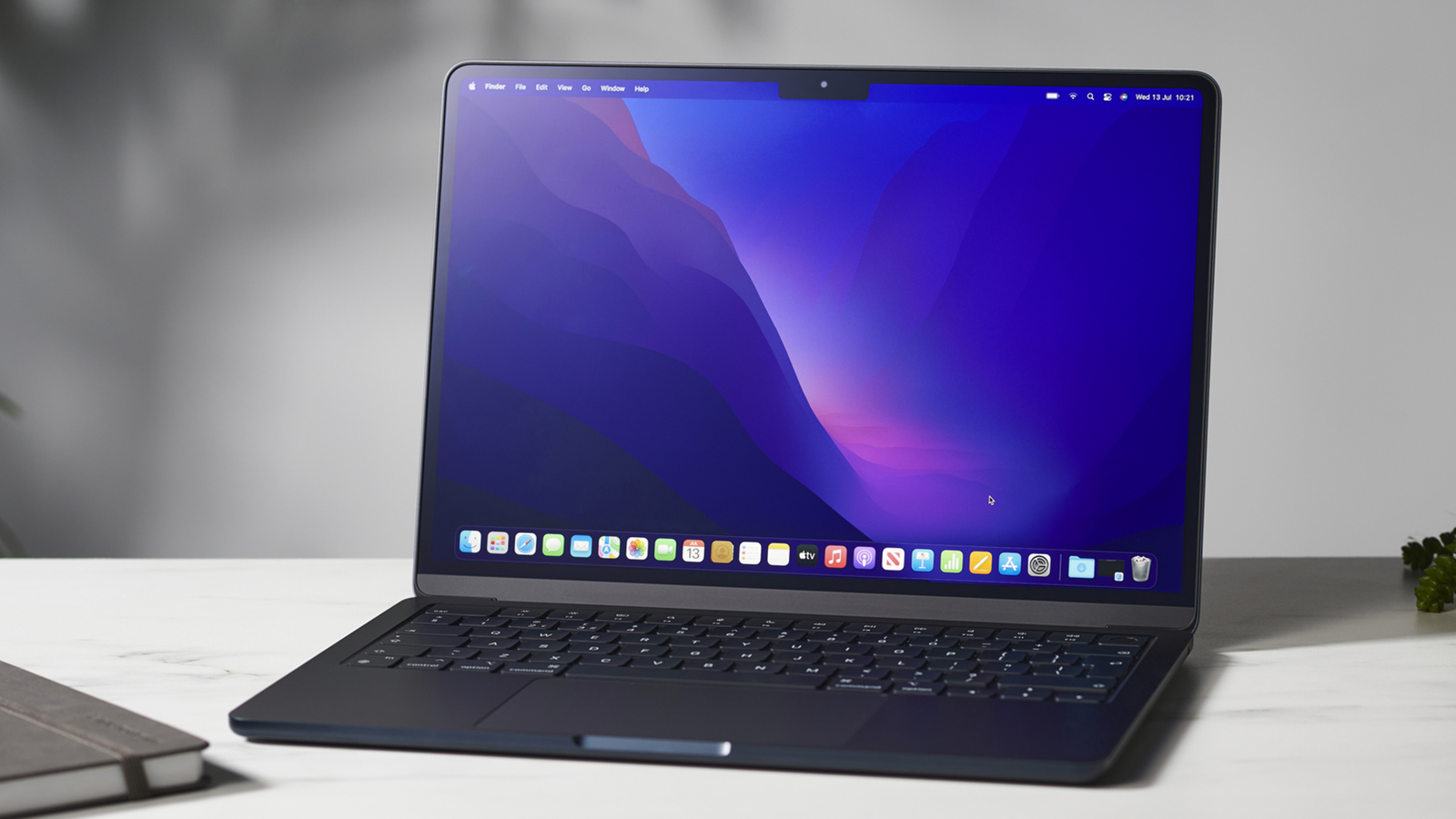The OLED MacBook Air could come with a slightly smaller display

We're expecting Apple to launch a MacBook Air with an OLED display in the next year or two, and the latest unconfirmed leak around the laptop suggests that it's going to arrive with a slightly smaller 13.4-inch display.
That's according to well-respected industry analyst Ross Young (via MacRumors), who has previously said that this OLED MacBook Air is going to show up in 2024. Young adds that OLED-equipped MacBook Pros won't show up until 2024.
Just a couple of days ago we covered a report that also pointed to 2024 as the year when this new product would arrive. Both Samsung and LG are apparently supplying the necessary OLED screens to Apple's manufacturing partners.
Size matters
There is a little bit of confusion here, because that previous report mentioned a 13.3-inch display. The most recent, M2-powered MacBook Air launched in 2022 has thinner bezels and a 13.6-inch screen, though the M1-powered edition from 2020 with a 13.3-inch screen is still sold by Apple.
According to Young, the OLED MacBook Air will go between these two sizes and come in at 13.4 inches. It remains to be seen what changes there will be in terms of bezel size, the aspect ratio of the display, or the dimensions of the laptop as a whole.
One more tidbit from the same source: there is apparently a 15-inch MacBook Air coming this year, though with an LCD screen rather than an OLED one. That matches up with predictions from other reliable tipsters in the industry.
Analysis: the future is OLED
While LCD screens are certainly fine – and can be great, in some cases – it's clear that OLED is the superior technology. The brightness and contrast should be superior on these screens, and they're also more power efficient for better battery life.
Sign up for breaking news, reviews, opinion, top tech deals, and more.
That's why high-end flagship phones all have OLED screens. With OLED, each pixel provides its own backlight for an improved picture, whereas LCD panels have larger backlight areas that each cover groups of pixels.
Cost can be an issue, especially as screen size goes up (as you'll see if you compare prices on OLED and LCD TVs). We're hoping that Apple's move to OLED on its MacBook computers won't mean substantially higher prices at the same time.
All things considered though, this should be a good move for consumers. There's talk that the iPad Pros are going to make the switch to OLED too, so it seems clear that Apple is committed to making a full switch to the display tech in the long term.

Dave is a freelance tech journalist who has been writing about gadgets, apps and the web for more than two decades. Based out of Stockport, England, on TechRadar you'll find him covering news, features and reviews, particularly for phones, tablets and wearables. Working to ensure our breaking news coverage is the best in the business over weekends, David also has bylines at Gizmodo, T3, PopSci and a few other places besides, as well as being many years editing the likes of PC Explorer and The Hardware Handbook.